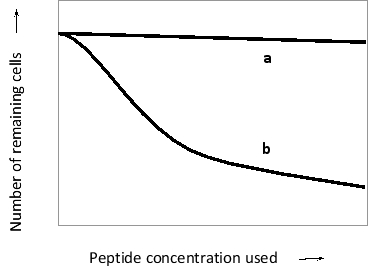Multiple Choice
A researcher has coated the wells in a multiwell plate with human plasma fibronectin. She introduces integrin-expressing cells into these wells in the presence of different concentrations of a synthetic peptide. She then washes the wells to remove unbound cells and counts the number of cells that remain attached to each well. The results of her experiment are presented in the following schematic graph. The synthetic peptide sequences used in these experiments were GRGDSPC (1) or GGDRSLN (2) . Which one of these peptides (1 or 2) would you expect to correspond to curve a in the graph? Which curve (a or b) would you expect if a synthetic peptide with the sequence GDGRSPC was used? C is cysteine, D is aspartic acid, G is glycine, L is leucine, N is asparagine, P is proline, R is arginine, and S is serine. 
A) 1; a
B) 1; b
C) 2; a
D) 2; b
Correct Answer:

Verified
Correct Answer:
Verified
Q8: Indicate true (T) and false (F) statements
Q9: Cells expressing either N-cadherin (A), high levels
Q10: In the following schematic diagram of a
Q11: A cell's response is not the same
Q12: Consider two cells attached to each other
Q14: Consider a sheet of epithelial tissue that
Q15: Indicate true (T) and false (F) statements
Q16: Indicate true (T) and false (F) statements
Q17: Cadherin molecules at the cell surface are
Q18: In insects such as Drosophila melanogaster, electrical